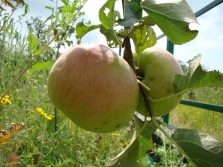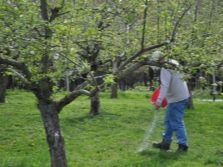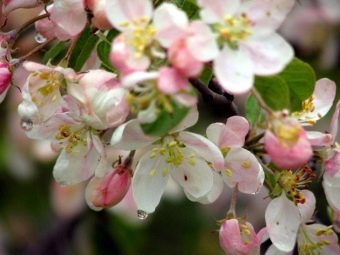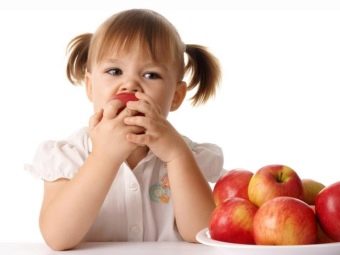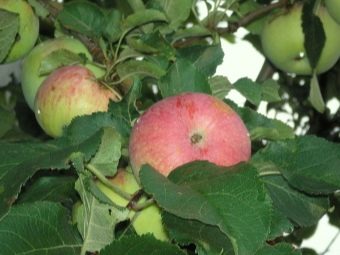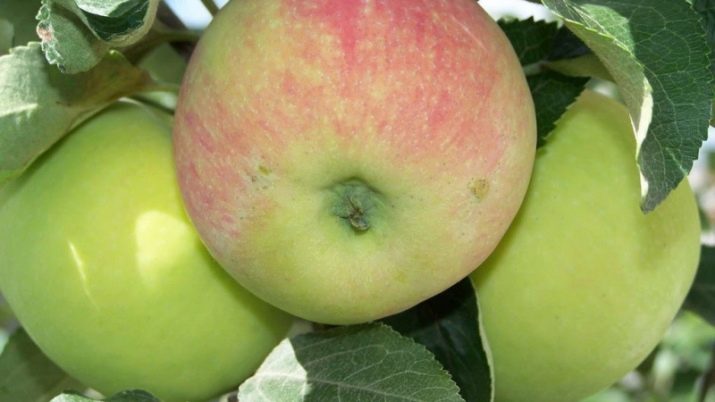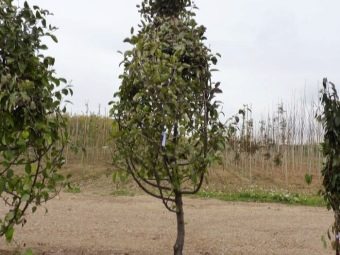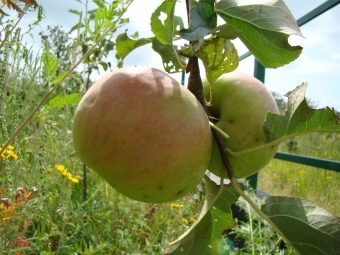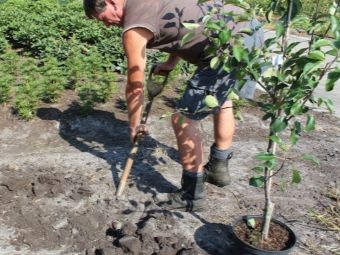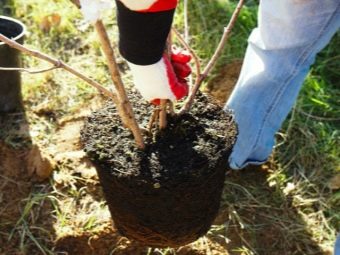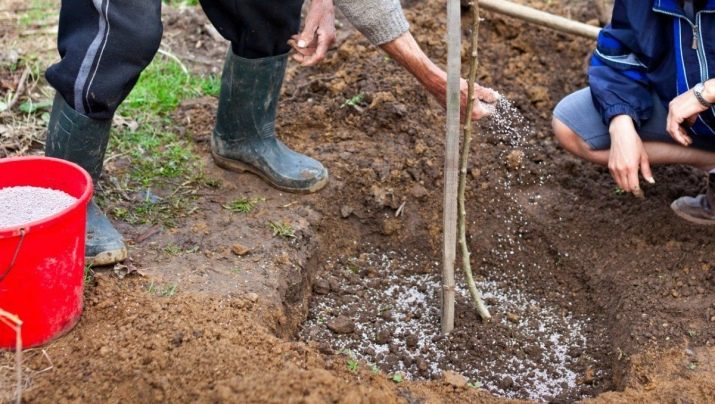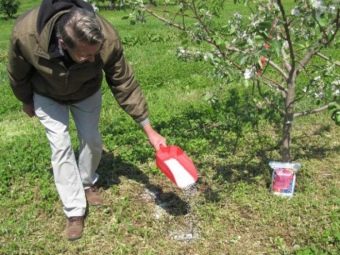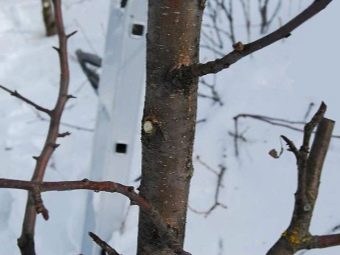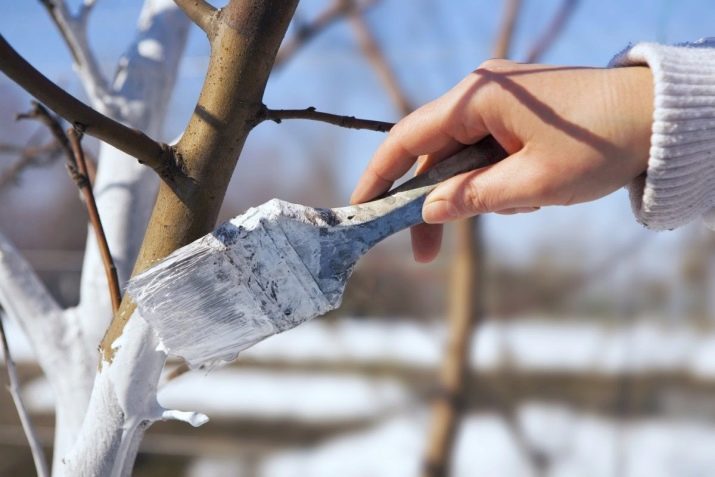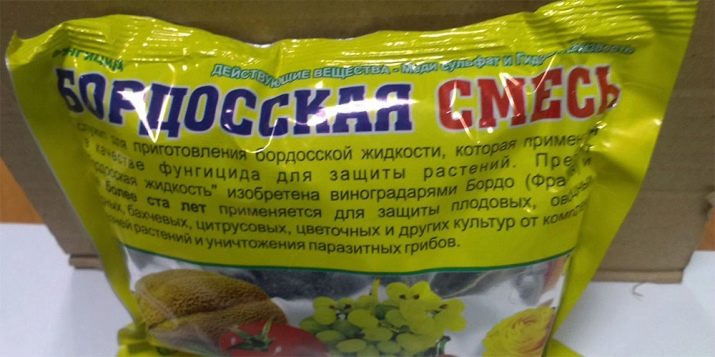Apple "Grushovka Moskovskaya": description of the variety, planting and care
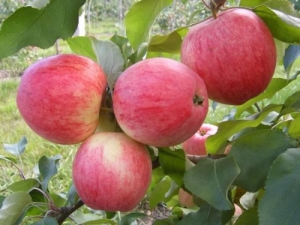
An apple tree is the most common tree that can be found in homestead land and gardens.Culture is popular not only because of its fruits, but also at the expense of external attractiveness. Among the favorites of planting can be distinguished variety "Grushovka Moskovskaya", which has been cultivated in Russia for several centuries.
Variety description
"Pear" is a culture, the formation of which occurred through natural selection. For the first time the variety was described several centuries ago. Today, the apple tree has become a frequenter in the garden plots. As for growing it in gardens for industrial use of fruits, in this segment the culture is less in demand. But for personal use, the variety is popular due to its resistance to negative temperatures, rich yields and high taste qualities of the fruit.
The culture in adulthood can grow to seven meters in height, the crown of the apple tree is rounded and branched. Young seedlings in the first years after planting have a pyramidal crown. The bark of the branches, for the most part, with a yellow-orange tint, shoots have a brown color. Foliage "Pear" is formed on the elongated petioles and resembles an ellipse. Some leaves have a green-yellow color. The young culture on the leaves formed the edge, over time it disappears and the surface becomes smooth. In the flowering phase of the apple, pink inflorescences ripen, which in the course of development become white.
Ripe apples have an average size, the weight of one fruit is about 80 grams, sometimes the weight of fruits reaches 120 grams. The shape of the apples is round, slightly flattened at the top and bottom. Apples of the "Pear" variety are distinguished by the color of their skin - on the greenish-yellow surface there is a large number of pink stripes and inclusions. In this case, the skin is quite soft and glossy, with a slight natural waxy bloom. The pulp is aromatic and juicy. Due to the minimum caloric content of apples, which does not exceed 47 kcal, the variety is considered to be a dietary product.
The apple tree belongs to the early varieties, since the harvest from the trees falls on July. On average, a tree can grow in a garden up to 50 years. The plant will be ready for fruiting by the fourth year of life. At first, about 10 kilograms of fruit per season can be harvested from a plant, and as harvest progresses, crop volumes will increase. Some gardeners have the opportunity to collect from the tree about 100 kilograms of apples during the fruiting period. Harvested fruits are stored no more than three weeks, due to the softness of the structure of apples. This feature makes it impossible to transport them over long distances.
“Grushovka” is successfully cultivated throughout Russia, it can be found in the gardens of Siberia, the Urals, in the Moscow region and throughout the European part of the country. In addition, the culture is grown in Belarus, Ukraine, Moldova. “Grushovka Moskovskaya” is a self-fruitful culture. Therefore, plant seedlings are planted next to other apple varieties. Apple trees “Antonovka”, “Bellefle-Kitaika” will become good neighbors for the tree.
The culture was used for breeding work, as a result of its crossing with other plants, two hybrids were bred - “Early Pear” and “Winter Pear”. The first hybrid variety exceeds the parent variety in several ways. First of all, it grows larger apples, in addition, the crop produces a greater yield.
“Early Beetle” is immune to scab, but the fruiting period is stretched over time, as the apples ripen at the same time. And also the hybrid is not allocated with annual fructification. The second hybrid variety is comparable in yield to the maternal crop; fruits are larger than average.
Such an apple tree is not grown as often as it does not tolerate frosts and has low immunity to disease.
Advantages and disadvantages
For the full characterization of the "Pears" it is necessary to consider the strengths and weaknesses of the culture. The grade is distinguished by the following positive qualities:
- Unlike its hybrids, the parent stands out resistance to frost, therefore, occupies a leading position in the existing list of cold-resistant apple trees; as the practice of growing a tree shows, it retains its viability even with thermometer readings below -50ºС, this quality is responsible for its widespread cultivation in that part of the country where regions with severe winters are located;
- The apple tree enters the fruiting stage quite early; moreover, the apples ripen quickly and evenly;
- An adult and healthy tree is able to produce great harvests, and the fruits are very useful for the human body because they contain a lot of ascorbic acid, pectins, and vitamins of group B and P.
Like any other fruit crop, the variety has the following disadvantages:
- the plant is subject to various diseases, most often an apple tree is affected by scab; such situations are directly related to climatic features that relate to the loss of a large amount of precipitation;
- in addition to excess moisture, the plant does not tolerate drought badly, sometimes because of excessive heat, the tree sheds all its fruits;
- the minimum period of storage of the crop - in the light of this feature, the “Grushek” is not suitable for industrial cultivation.
Planting and care
Special measures concerning agricultural technology, apple does not require. The optimal time for planting seedlings is spring - April or May. In some cases, young trees are planted in the fall, usually planting is carried out in September or October. It is very important when choosing a place in the garden for an apple tree to avoid shaded places, as well as areas where there is accumulation of moisture. Otherwise, the harvest obtained in the summer will consist of fresh and small apples.
The depth of the seedling should be 1x1 m. As regards the type of soil, it is best to plant the crop in neutral acid acid loam. Apple tree loves fertile soils rich in mineral and organic fertilizers. In advance it is worth considering that the crown of “Pear” is rather sprawling, so at a distance of 3-4 meters from it should not grow other trees or be located any buildings. It would be more correct to plant an apple tree on the southern side of the plot so that the plant does not have any obstacles to obtaining sunlight and heat.
It is worth avoiding places where drafts are present. Not the best option for an apple tree will be a plot with surface groundwater.
Rooting of a sapling is worth holding in four hands. For a fragile plant, additional support will be needed, for which small pegs are used. They are usually placed on the north side. Before planting the crop, fertilizer must be applied to the planting pit. Top dressing of the soil is carried out several days before the planned planting of the tree in the ground. For these purposes, humus is used.
Drainage should be placed at the bottom of the recess; a broken brick, coarse sand, and gravel would be a good option. In the role of fertilizer is to use manure, wood ash and mineral compounds. In the near-ground circle, earthen rollers are formed, immediately after transplanting, the seedling must be watered, after which the mulching of the hole should be performed. To activate growth at the first flowering of apple trees, it is recommended to remove about 80% of flowers from it. In the fruiting phase, half of the fruit is removed, which will allow for larger and juicy apples. The young tree needs good watering, so the introduction of moisture into the soil is carried out twice a week.
To abandon watering should be closer to mid-August, so the culture will direct all its resources to the accumulation of forces for wintering.
The introduction of fertilizers should be carried out in the second year after rooting of the seedling in the open field. In the first year, you only need to regularly loosen the soil, and water the culture.Top dressing is carried out in the spring, humus or horse manure will be useful for the apple tree, from mineral compounds it is necessary to give preference to carbamide. In the fall, the plant will need an integrated feed. However, the use of nitrogen-containing compounds should refrain. You can buy the drug "Kemira", in which the content of the substance will be minimal. The introduction of the composition occurs in dry form in the soil, which, after fertilization, must be dug up.
The first shaping of the “Pears” should be carried out in the second year after landing. Trimming will allow the trunk and branches to grow in the right direction. Works involve shortening the branches by 1/3, while the trunk is pruned by about 40 centimeters. The need for further work will depend on the state of the culture. In the autumn, you need to protect the tree from moss and lichen, as well as to destroy pests that can live in the bark for wintering. To do this, the tree trunk should be whitewashed.
Before this, it is necessary to inspect the plant for defects or cracks that are healed by the garden pitch.
It is best to use lime and clay for whitewashing apple trees. Substances dissolve in six liters of water, lime will need 2 kilograms, clay - 1 kilogram. In addition to water, skim milk must be added to the composition to ensure maximum adhesion to the barrel. The best period for processing will be November. In addition to the trunk, it is also worth paying attention to large branches of culture.
The variety does not need shelter for the winter, but it is necessary to protect the plant from invasions of rodents. For protection, improvised means are used - dark and durable bags, plastic containers, and spruce branches. Plastic will become a reliable shield for a tree trunk, and tied packages will be noticeable in winter. If we fix them so that they move from the wind and rustle, then we can be sure that hares and other pests will not be disturbed by the culture. With the arrival of spring, all the tree must be freed from protective materials. Otherwise, the trunk may overheat, which will contribute to the premature blooming of the kidneys.
As noted above, most often “Grushovka Moskovskaya” suffers from scab damage. Spores of this fungus can harm not only the green mass and shoots, but also spoil the harvest. To prevent the disease in the autumn period, it is necessary to remove all foliage and carrion from the site, carefully dig the soil. In addition, all existing cracks in the apple are subject to mandatory treatment with garden pitch. The composition can be bought in the store or on the market, experienced gardeners prepare it with their own hands. For the preparation of used resin and flaxseed oil.
Already affected cultures should be treated with Bordeaux liquid. This solution can also be made independently, since it consists of lime and copper sulphate. Preventive spraying of plants should be performed in the spring, at the moment when buds begin to bloom on the tree, the second time the apple tree is treated after it has flowered. In addition to folk remedies for scab, in specialized stores you can buy drugs for the treatment of fruit crops. Positive feedback from gardeners have compositions "Skor" and "Strobe." Folk and store tools during the season can be alternated with each other.
Considering the fruits of hybrids "Pears" and apples of the mother culture, it should be noted that the harvest obtained from the "Winter Pear", can be stored all winter. To do this, the collected fruits are placed in a dark and cool room in which the temperature will not exceed 0ºС. The fruits of "Pears of Moscow" and "Pears of Early" for long-term transportation will not work. However, the harvest will be an excellent raw material for making juices; home-made wines, jams, dried fruits and baby purees are made from apples. In addition, fresh apples are an excellent source of vitamins.
Reviews
The characteristic that gardeners give to the “Pear” variety of apple trees allows us to conclude that the crop produces good yields of tasty and healthy fruits. As well as the variety is distinguished by early ripening, which is considered as an advantage of the fruit crop. Among the downsides, according to reviews, there is a short shelf life for apples, which, however, does not prevent "Pears" from growing in the garden plots of summer residents and gardeners throughout Russia, including the central and northern regions.
You will learn more about the sort of apple trees "Grushovka Moskovskaya" in the following video.

